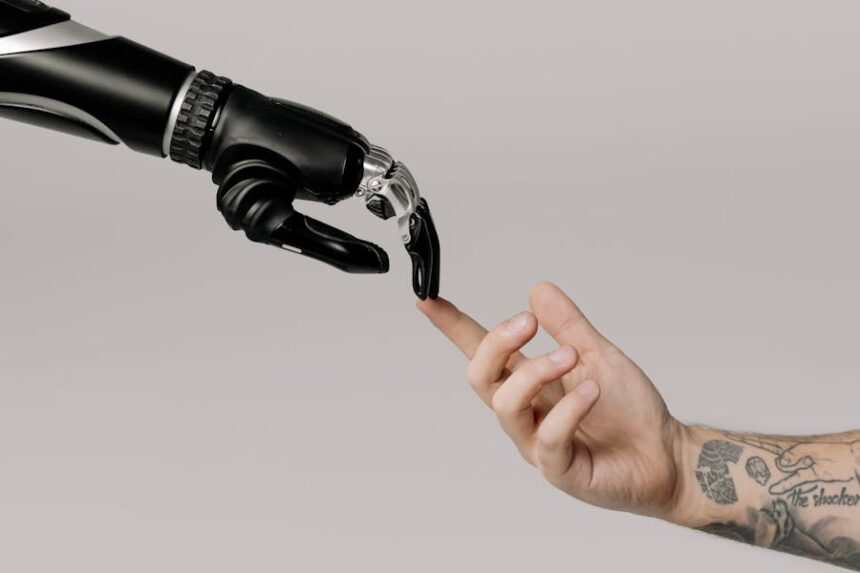There’s a promise that AI will save support teams from burnout. Automate the busywork. Handle the easy tickets. Free up humans for complex stuff. On paper, it sounds perfect. But reality doesn’t always match the pitch. Many hybrid support teams now carry two weights: old pressures plus new stress from half-baked automation. A chatbot that interrupts instead of helping. A suggestion feed that never shuts up. Metrics that push agents to handle more tickets but with less control.
Support Leaders, Ops Teams, and CX Designers all face this hidden tradeoff in 2025. The goal is balance, but it’s easy to tilt too far. Add too much AI, and humans burn out differently. Design it wrong, and trust breaks down on both sides of the screen. This guide digs into the messy middle ground: where real agents meet real bots.
What Burnout Looks Like in a Hybrid Team Today
Adding AI doesn’t erase burnout. It just shifts where it shows up.
Human Burnout in the Age of Automation
A human agent today does more than answer tickets. They read AI suggestions, double-check facts, tweak drafts, and catch AI slip-ups. This constant back-and-forth drains energy fast.
Some days it feels like a hundred tiny decisions: accept the AI’s draft or rewrite? Trust the auto-response or step in? This decision fatigue builds up. Agents switch between being an advisor, guiding the AI, and an executor, fixing what the AI misses. That role-switching is mentally taxing. Then, there’s the clean-up. When AI says the wrong thing or promises too much, humans step in to calm frustrated customers. De-escalation is tiring work. Doing it because your tool messed up makes it worse.
AI Fatigue Is Real Too, Just Ask the Agents
Many support teams see another trend: AI fatigue. It creeps in when agents lose trust in the tools meant to help them. If an AI makes too many errors, agents tune it out. They stop using suggestions and go back to manual work. Now they do double work: babysit the bot and do the task from scratch.
Another risk is skill fade. If a team relies too much on the AI, people forget how to handle rare cases. When the AI fails, they panic — or pass the problem around. Escalation gets messy too. If a bot handles part of a conversation badly, who owns the fix? Who explains the mix-up to the customer? Who stops the loop? When no one has a clear answer, trust in the system drops, and fatigue goes up.
Why Automation Design Can Cause More Harm Than Help
Smart tools can backfire when they’re built to look good on paper but fail real people in real workflows.
The Unseen Pressure of “Efficiency Theater”
Many teams chase the wrong numbers. They focus on speed and closure rates. They want tickets cleared fast to show ROI on the new AI spend. But this “efficiency theater” hides real problems.
When your AI cares only about closing tickets, it can ignore context. Maybe it ends a chat before the customer’s real issue is solved. Or it interrupts a conversation to push a macro that makes no sense.
This rush for speed burns through agent focus. They end up spending more time fixing shortcuts than helping people. The result: human burnout wrapped in shiny automation metrics. If you’re hunting for better frameworks, start by looking at teams that discover the best AI tools for business intelligence and workflow design, not just ticket bots. These teams plan the flow before they launch the tech.
Examples of Misalignment in Real Support Teams
Hybrid teams see this all the time. Common trouble spots:
- AI prompts pop up at the wrong time. Instead of helping, they break flow. An agent tries to calm a customer, but the AI suggests an upsell. Wrong moment, more stress.
- Bad escalation logic. A bot loops the same ticket back to the same agent, or worse, bounces it between teams. Customers get annoyed. Agents get stuck.
- No clear handoff. The AI stops responding halfway through, but the customer thinks someone is still there. Now the agent jumps in cold.
If you want proof of how this goes wrong, see Intercom or Zendesk’s case studies on failed automation rollouts. None of this means AI can’t help. It means design choices matter. Done well, automation reduces load. Done badly, it just shifts the weight.
Designing Support Systems With Human-AI Harmony in Mind
Fixing burnout and AI fatigue starts with smarter design. You need systems where humans and AI know their roles — and respect each other’s limits.
Role Clarity for Both Humans and Machines
First, make it clear who does what. Many teams assume AI should handle everything it can. But “can” isn’t the same as “should.” Define clear tasks:
- Who triages incoming tickets?
- Who explains tricky issues?
- Who makes final decisions?
Sometimes the AI leads, routing basic questions. Sometimes the agent leads, handling emotion, context, or nuance. According to CoSupport AI, clear lines prevent overlaps and confusion.
Workload Design With Empathy, Not Just Logic
Good design respects how people actually work. Not every shift needs the same level of automation.
- Stagger AI usage. For simple cases or off-hours (L1), lean on AI more. For complex work (L2), keep more human touch.
- Rotate complexity. Give agents real challenges sometimes. It keeps skills fresh and makes work feel meaningful.
- Allow opt-outs. If an AI suggestion feels off, let the agent skip it. Don’t force a bad path.
When you build with empathy, your team trusts the tools more and uses them better.
Final Thoughts
AI won’t fully replace human support teams, and it shouldn’t try. The real win is balance. A smart hybrid team isn’t “half bots, half agents.” It’s a system where both work together without fighting for control. Long-term success doesn’t come from squeezing every last ticket through faster. It comes from designing workflows people trust and want to use. It comes from tools that lighten the load, not shift it.
The sweet spot isn’t a fixed ratio. It’s a living system. It adjusts when workloads spike. It gives humans room to step in when AI stumbles. It gives AI clear guardrails so agents don’t burn out fixing mistakes. Build your hybrid support with empathy, clarity, and room to adapt. Done right, you won’t just fight burnout, you’ll build a team that scales and stays human at its core.




